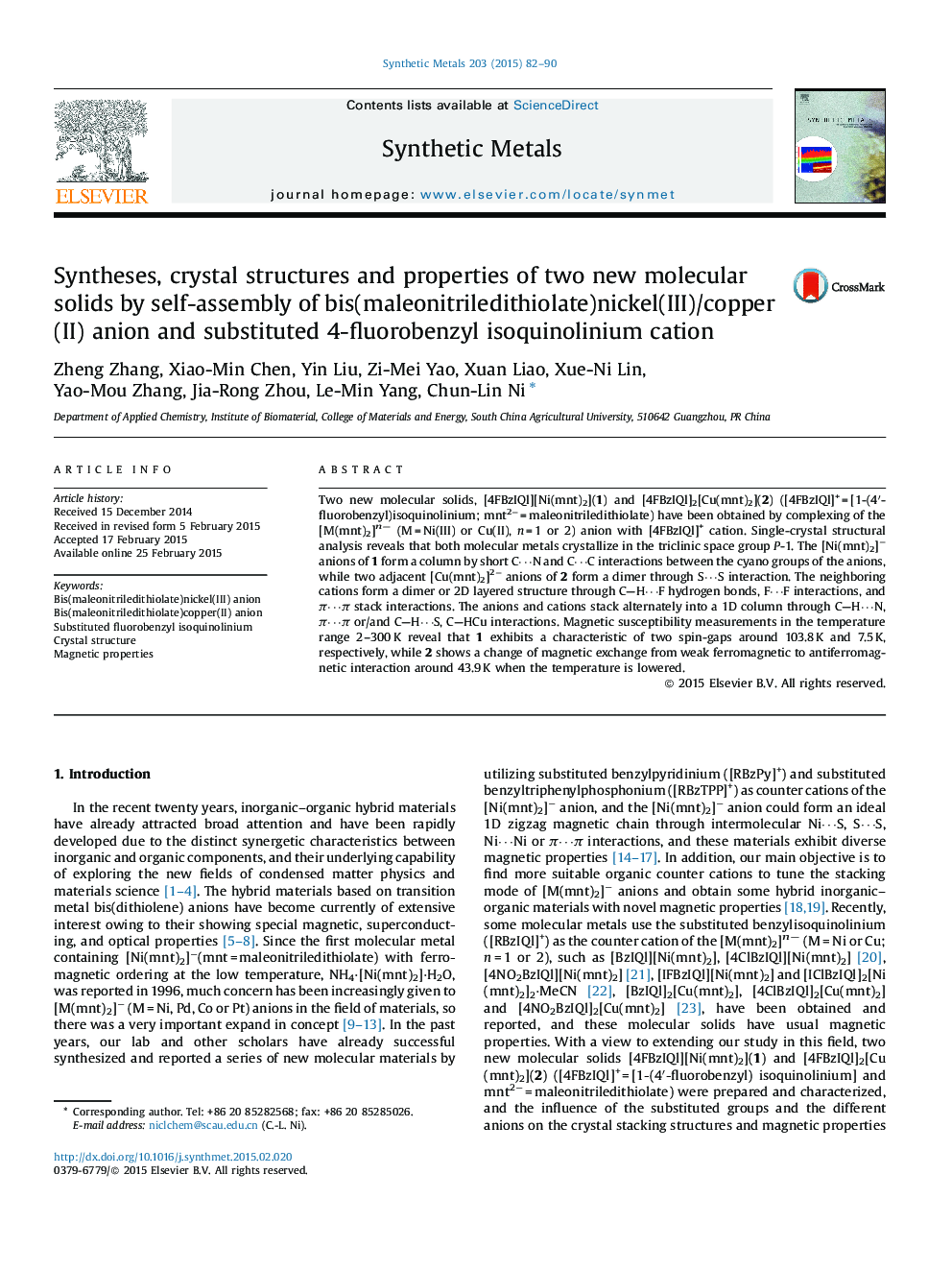| کد مقاله | کد نشریه | سال انتشار | مقاله انگلیسی | نسخه تمام متن |
|---|---|---|---|---|
| 1440562 | 1509374 | 2015 | 9 صفحه PDF | دانلود رایگان |

• Two molecular solids containing bis(maleonitriledithiolate)nickel(III)/copper(II) anion were obtained.
• The [Ni(mnt)2]− anions of 1 form a column by short C⋯N and C⋯C interactions between the anions.
• The [Cu(mnt)2]2− anions in 2 form a dimer by the side-to-side S⋯S interactions.
• There exists a characteristic of two spin-gaps around 103.8 K and 7.5 K in 1.
• There is a change from weak ferromagnetic to antiferromagnetic exchange around 43.9 K exists in 2.
Two new molecular solids, [4FBzIQl][Ni(mnt)2](1) and [4FBzIQl]2[Cu(mnt)2](2) ([4FBzIQl]+ = [1-(4′-fluorobenzyl)isoquinolinium; mnt2− = maleonitriledithiolate) have been obtained by complexing of the [M(mnt)2]n− (M = Ni(III) or Cu(II), n = 1 or 2) anion with [4FBzIQl]+ cation. Single-crystal structural analysis reveals that both molecular metals crystallize in the triclinic space group P-1. The [Ni(mnt)2]− anions of 1 form a column by short C⋯N and C⋯C interactions between the cyano groups of the anions, while two adjacent [Cu(mnt)2]2− anions of 2 form a dimer through S⋯S interaction. The neighboring cations form a dimer or 2D layered structure through CH⋯F hydrogen bonds, F⋯F interactions, and π⋯π stack interactions. The anions and cations stack alternately into a 1D column through CH⋯N, π⋯π or/and CH⋯S, CHCu interactions. Magnetic susceptibility measurements in the temperature range 2–300 K reveal that 1 exhibits a characteristic of two spin-gaps around 103.8 K and 7.5 K, respectively, while 2 shows a change of magnetic exchange from weak ferromagnetic to antiferromagnetic interaction around 43.9 K when the temperature is lowered.
Figure optionsDownload as PowerPoint slide
Journal: Synthetic Metals - Volume 203, May 2015, Pages 82–90